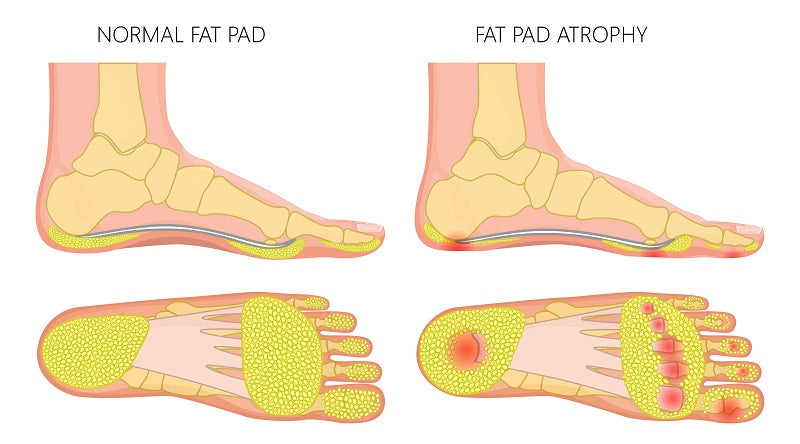
Why Your Feet Hurt More Lately — And What to Do If You Have High Arches or Fat Pad Loss
Share
If walking barefoot feels like stepping on concrete, you’re not alone.
For many active women—especially dancers, fitness lovers, and professionals who are always on their feet—foot pain becomes more common over time. You might start noticing that your feet feel more sensitive, your heels ache, or the balls of your feet burn even after short walks.
So what’s going on?
What Happens to Your Feet Over Time
Feet change. With age, repetition, or high-impact activity, the fat pads on the bottom of your feet can start to shrink or migrate. These fat pads act as your body’s natural cushioning—especially under the heel and forefoot.
Once they’re gone, every step becomes harder on your bones, joints, and nerves.
Combine that with high arches (also called pes cavus)—a foot type that already puts extra pressure on the heel and ball—and you’ve got a recipe for chronic foot pain.

Signs You May Have Fat Pad Loss or High Arches
- Your feet hurt when walking barefoot or on hard surfaces
- You feel a sharp or burning pain under your heel or ball of foot
- Shoes that used to feel fine now feel thin or unsupportive
- You feel unstable or “wobbly” when walking
- Your feet feel more sensitive, even with socks on
Why Most Shoes Don’t Help
Most everyday shoes—even athletic ones—aren’t made with high arches or fat pad loss in mind. They either:
- Have flat insoles with no contour
- Offer too little impact absorption
- Don’t address forefoot pressure
- Focus on style over structure
Even popular “recovery shoes” often don’t offer enough arch support or targeted pressure relief for women who need real, anatomical help.

What to Look for in a Shoe If You Have High Arches or Sensitive Feet
If you’re dealing with foot pain or fat pad loss, you need footwear that combines shock absorption, arch support, and pressure redistribution. Look for:
- Contoured arch support (not just flat foam)
- Cushioned midsole that doesn’t flatten with wear
- Soft interior with no seams or friction points
- Wide toe box to reduce pressure
- Lightweight rocker sole to ease forefoot strain
- Heel stability for added balance
Meet Gliss: Recovery Shoes Designed for High Arches and Sensitive Feet
Gliss was designed by a second-generation pointe shoe fitter and pedorthist-in-training who’s spent over 20 years studying the world’s most demanding feet.
Dancers, athletes, and women with high arches needed a shoe that looked good—but actually helped their feet recover.
So we built Gliss from the arch up.

Why Gliss Works for Foot Pain:
- Midsole cushioning absorbs shock where fat pads are lost
- Anatomical arch support tailored for high arches
- Seamless interior so nothing rubs your sensitive skin
- Balanced stability for better alignment and less fatigue
- Light, modern silhouette you’ll actually want to wear
Whether you’ve been dancing for decades or just want to protect your feet long-term, Gliss is the recovery shoe that finally understands you.
Final Thought: Foot Pain Is Common, But It’s Not Normal
If you’ve been told that foot pain is “just part of getting older,” we’re here to say: it doesn’t have to be.
With the right footwear, you can reduce pain, prevent further damage, and feel like yourself again.
Shop Gliss Recovery Shoes for High Arches → Shop Now

